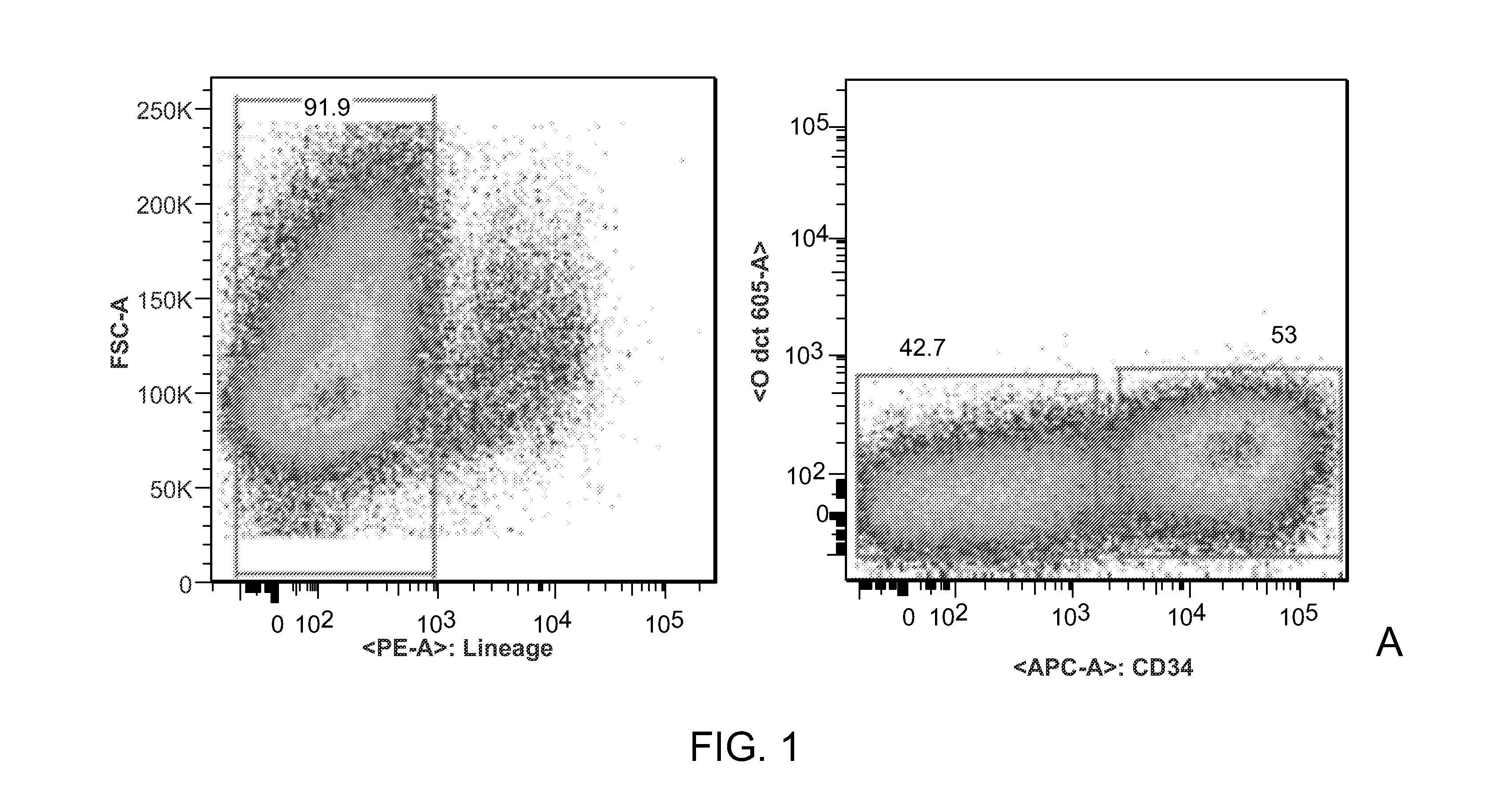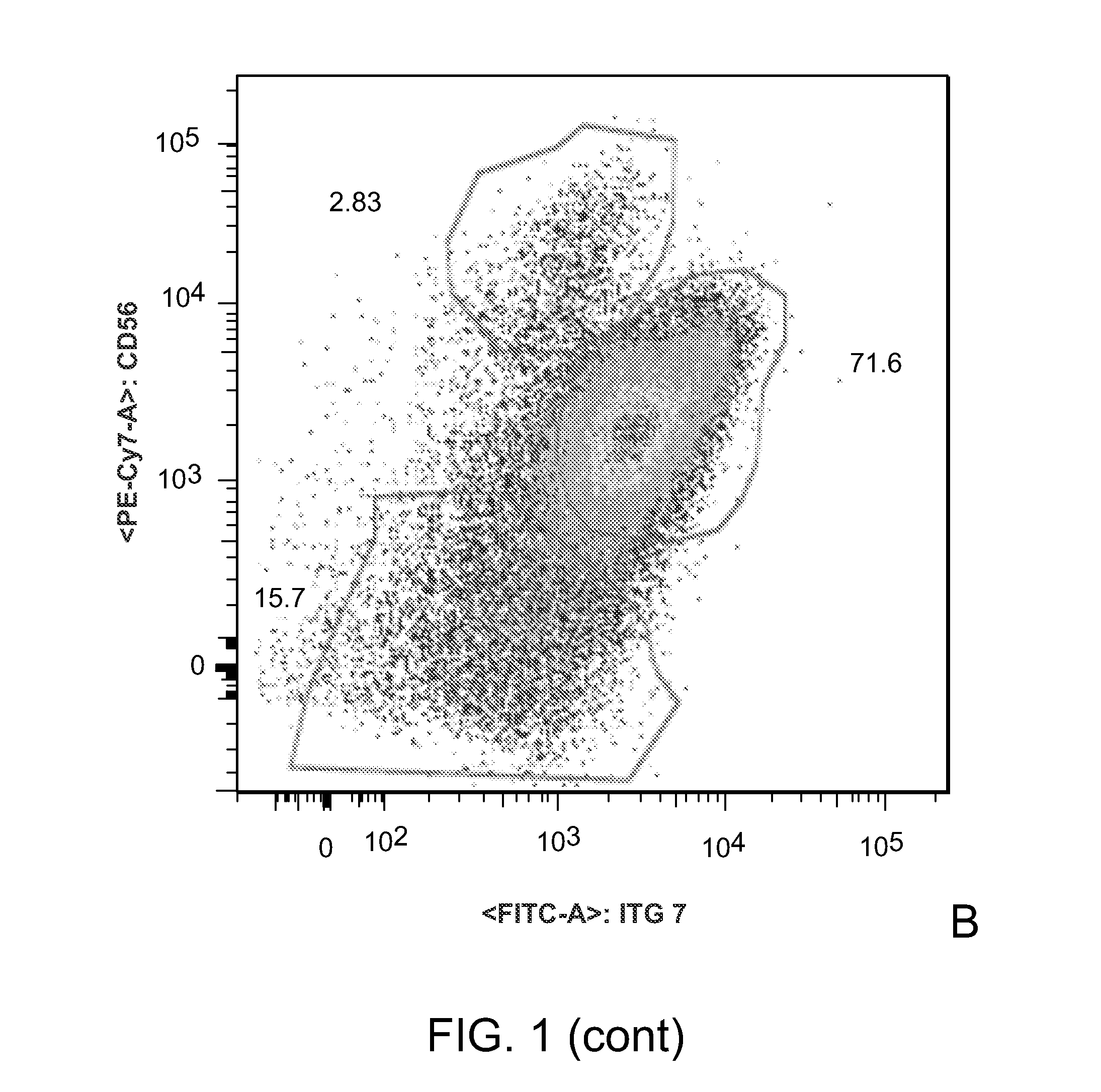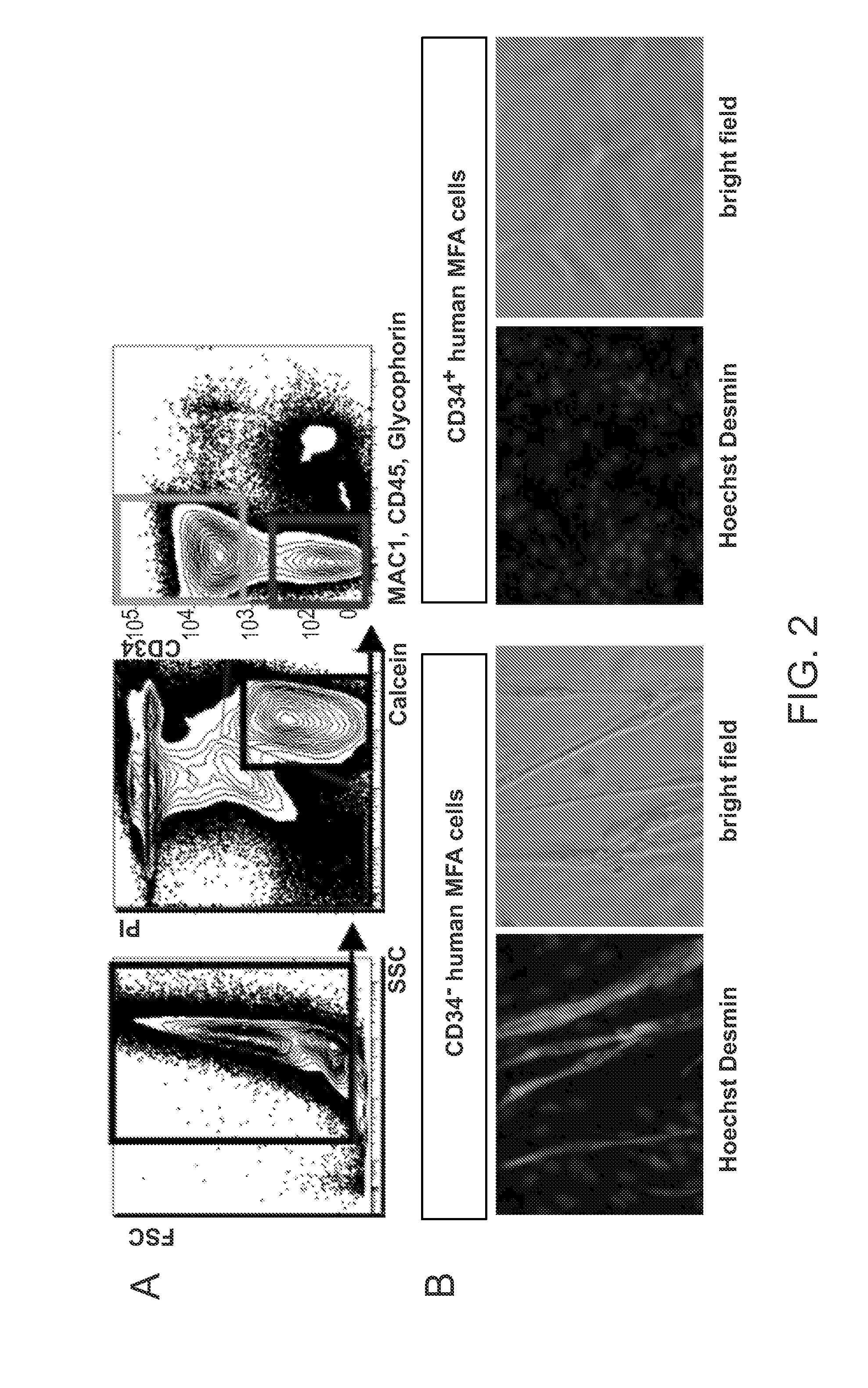Isolation and characterization of muscle regenerating cells
a technology characterization, which is applied in the field of isolating and characterization of muscle regenerating cells, can solve the problems of difficult identification, isolation, purification, and lack of complete answers, and achieves the identification of mouse satellite cell subpopulations capable of myogenic activity, and is of little help in the identification and isolation of similarly responding cells in humans
- Summary
- Abstract
- Description
- Claims
- Application Information
AI Technical Summary
Benefits of technology
Problems solved by technology
Method used
Image
Examples
example 1
Identification of Human Skeletal Muscle Stem Cells
[0125]The primary goals of this work were to identify phenotypically the human skeletal muscle precursor cell (hSMP) population, to define any age-related changes in hSMP frequency and function, to establish transplantation protocols useful for the treatment of damaged muscle, to establish a human sarcoma model system and to test potential pharmacological targets that may reverse hSMP deficiencies in aged or injured skeletal muscle.
[0126]The goal of this Example has been to determine the cell surface marker combination that identifies human skeletal muscle precursor cells and to establish protocols for their prospective isolation from human skeletal muscle. Herein we disclose the identification of a novel population of human myofiber-associated cells (CD45−MAC1−GlycophorinA−CD31−CD34−ITGA7hiCD56intermediate) that is highly enriched for human skeletal muscle precursor cells as evidenced by PAX7 and M-cadherin positivity, absence of co...
example 2
Regeneration of Human Muscle Tissue
[0148]Mouse skeletal muscle precursor cells represent bona fide tissue stem cells, capable of in vivo engraftment and reseeding of the mouse satellite cell pool post injury. By definition, a human putative skeletal muscle precursor cell population should meet the same criteria. In this Example, we injected distinct subpopulations of freshly sorted human myofiber-associated cells, including CD45−MAC1−GlycophorinA−CD34− cells and CD45−MAC1−lycophorinA−CD31−CD34−ITGA7hiCD56intermediate cells into the cardiotoxin pre-injured tibialis anterior muscle of NSG (NOD.SCID IL2Rγ− / −) mice, Recipient muscles were harvested 3-4 weeks post injection. Engraftment of human cells was detected by species-specific staining for human Spectrin and human Lamin A / C according to protocols previously established in the lab and known to one of ordinary skill in the art.
[0149]To determine the ability of sorted hMFA cells to contribute to muscle regeneration in vivo, we adapte...
example 3
The Transcriptional Signatures of Fetal hMFA Cell Subsets are Consistent with Lineage-Specific Differences in their Differentiation Capacitates
[0151]To gain deeper insights into the molecular underpinnings of CD34−CD56intITGA7hi hSMPs and CD34+ adipogenic precursors within the hMFA cell pool, the transcriptional profile of these functionally distinct cell populations, as compared to unfractionated hMFA cells, was evaluated using the 0133 plus 2 Affymetrix microarray platform. Principal component analysis (PCA, FIG. 4A) and hierarchical cluster analysis (FIG. 4B) showed clustering of fetal hSMPs, CD34+ cells and hMFAs into 3 transcriptionally distinct cell populations. Comparison of hSMPs to hMFAs identified 5686 differentially regulated probesets, and comparison of CD34+ cells to hMFAs yielded 1029 differentially regulated probesets (>1.5-fold difference up or down and p+ cells (>5-fold difference, p+ cells versus hSMPs (>5-fold difference, p<0.01, total 854 genes), the 7 top-scorin...
PUM
| Property | Measurement | Unit |
|---|---|---|
| time | aaaaa | aaaaa |
| volume | aaaaa | aaaaa |
| temperature | aaaaa | aaaaa |
Abstract
Description
Claims
Application Information
 Login to View More
Login to View More - R&D
- Intellectual Property
- Life Sciences
- Materials
- Tech Scout
- Unparalleled Data Quality
- Higher Quality Content
- 60% Fewer Hallucinations
Browse by: Latest US Patents, China's latest patents, Technical Efficacy Thesaurus, Application Domain, Technology Topic, Popular Technical Reports.
© 2025 PatSnap. All rights reserved.Legal|Privacy policy|Modern Slavery Act Transparency Statement|Sitemap|About US| Contact US: help@patsnap.com



